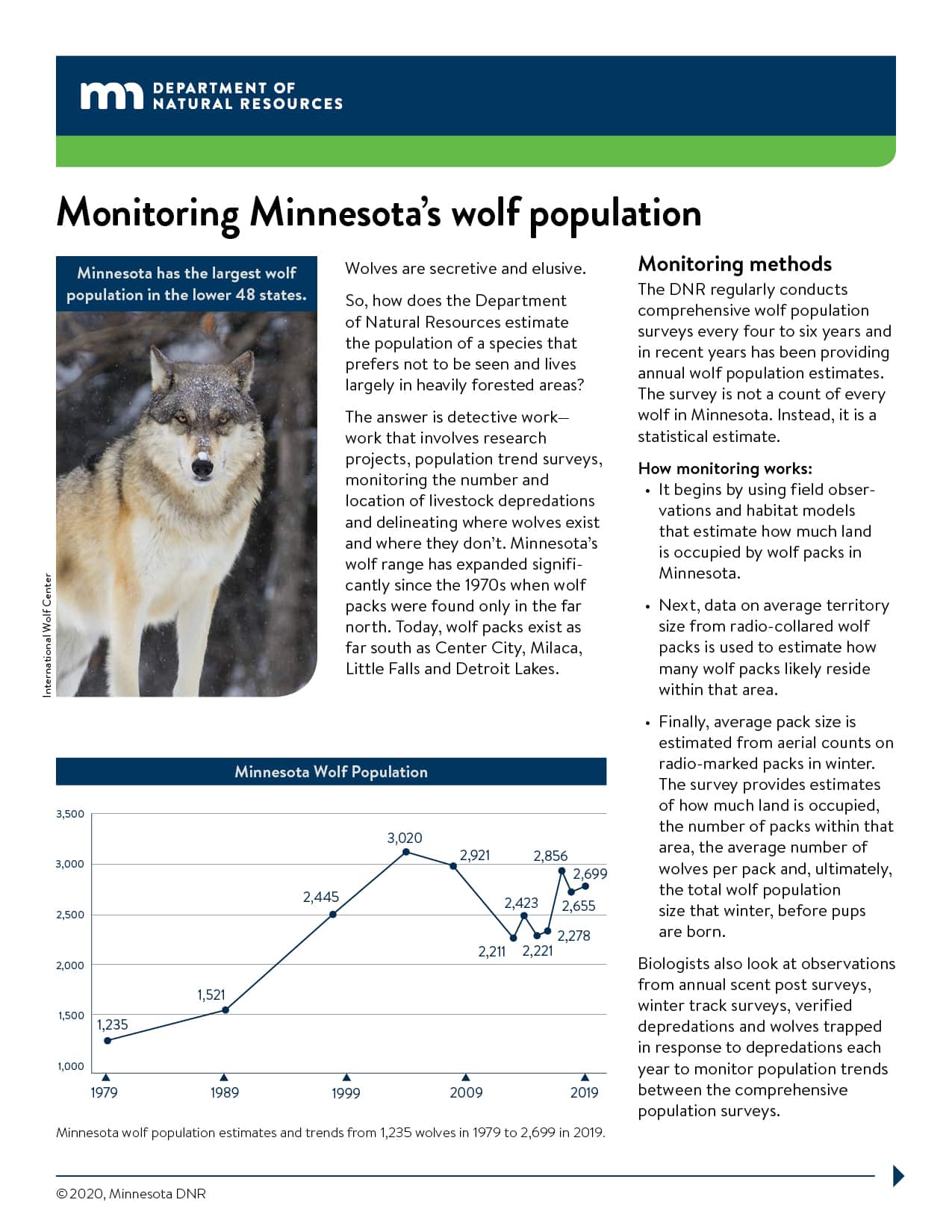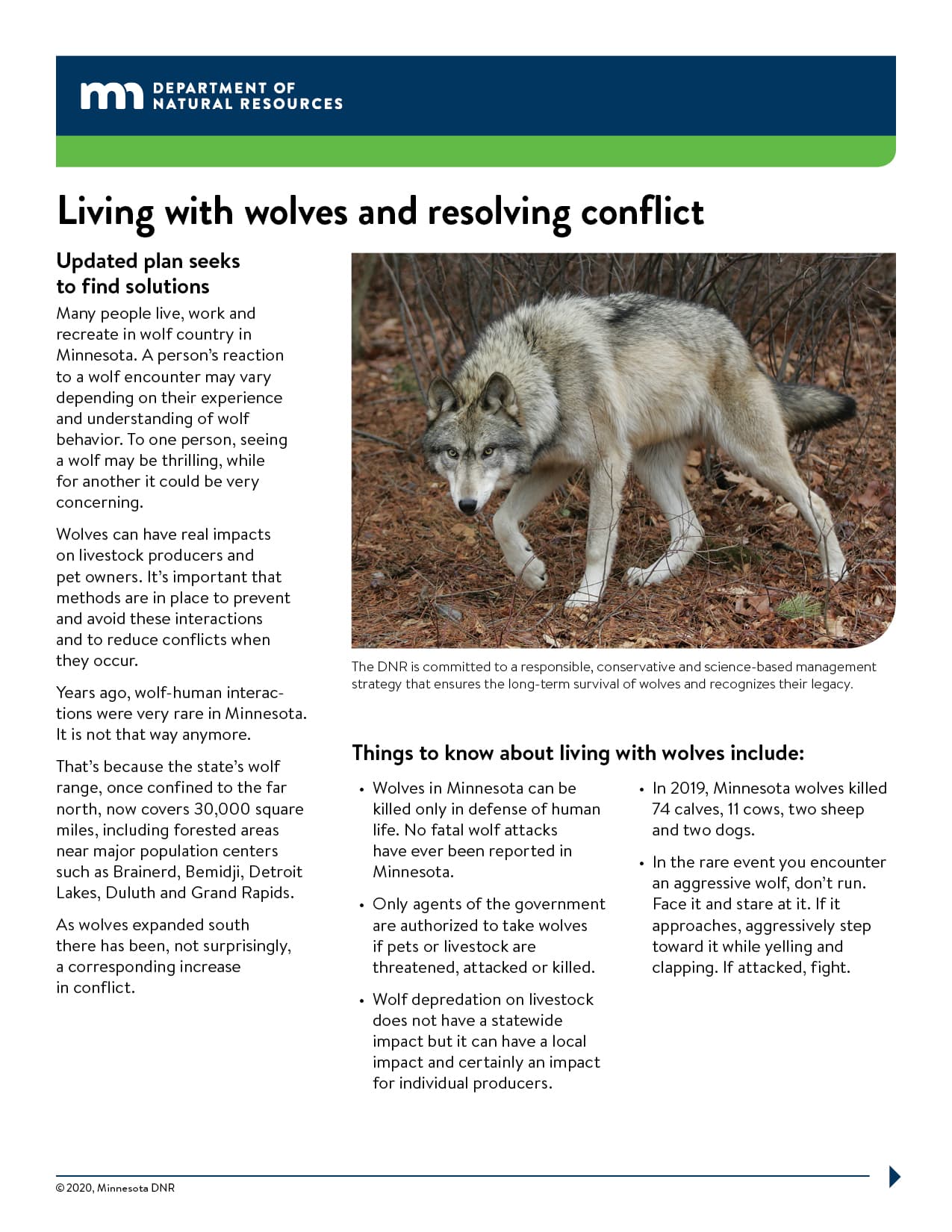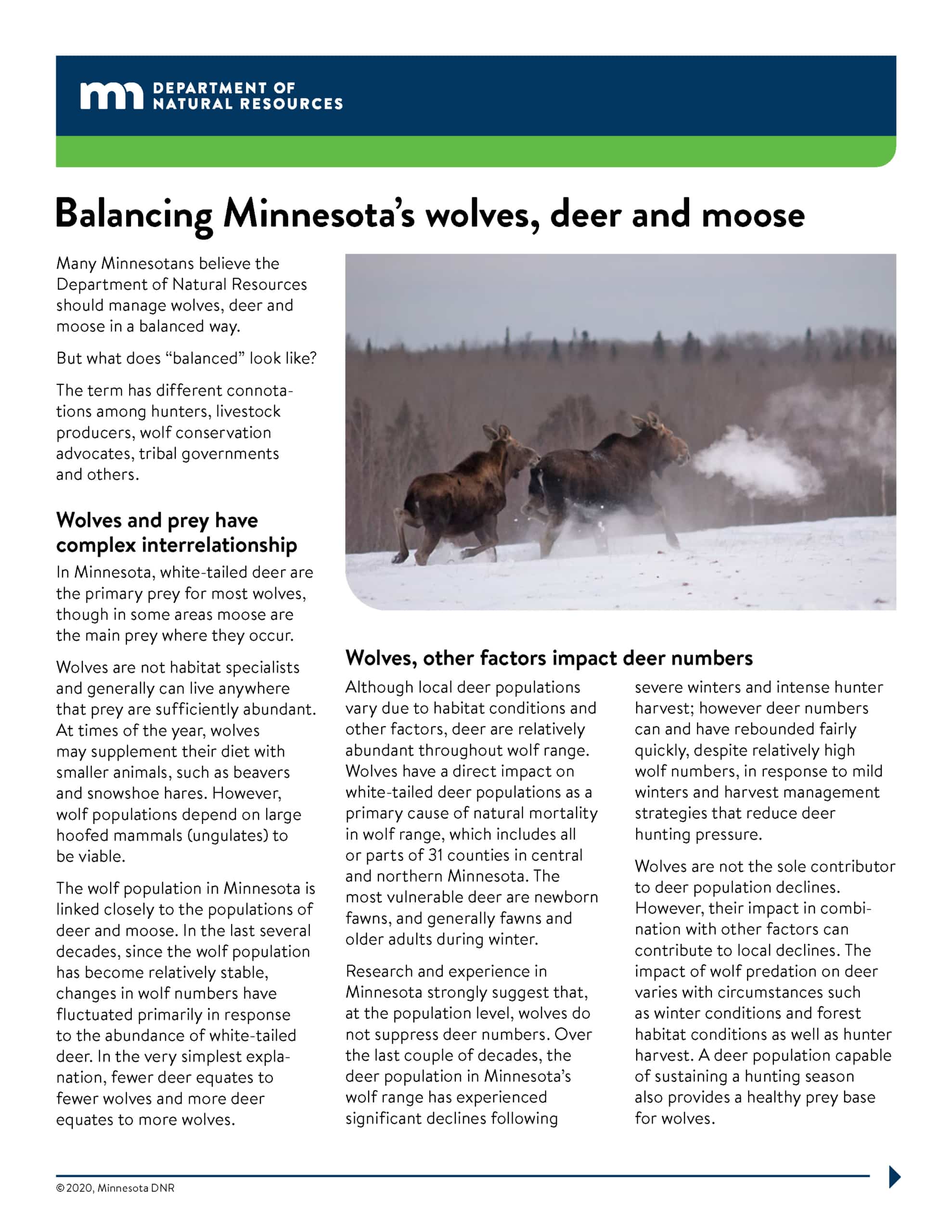The Minnesota Department of Natural Resources is revising its wolf management plan. The changes to this plan will be important to follow as Minnesota has the largest population of wolves in any of the 48 continental United States. This page aims to inform about that process so that everyone can follow along.
What is a wolf management plan?
The wolf plan describes and provides guidance on how the state manages wolves. This includes wolf population monitoring, population management, depredation control, public safety and more. Updates to the plan are expected to be completed in the first part of 2021 following a public review process.
Source – Minnesota DNR
Why is it being revised?
The DNR’s wolf plan is 19 years old. It was developed through extensive public input, supported by the federal government and was intended to provide guidance for Minnesota to transition from federal to state wolf management authority.
The wolf status has fluctuated, and with it so has the proportional amounts of state and federal management authority and activities. Nevertheless, there may be new information and strategies for improving wolf management.
Although much of the plan is still relevant, the wolf planning process is intended to identify how the plan can be improved and potentially set goals and objectives for improving wolf management strategies. The time has come to make technical revisions, identify strategies and objectives to improve wolf conservation, and evaluate public attitudes that may influence how wolves are managed.
Minnesota wolves no longer fall under the protection of the federal Endangered Species Act. The wolf population made a remarkable recovery under the Endangered Species Act, and has been considered one of the most successful species recoveries since the law was passed. Since wolves were removed from the Endangered Species Act, wolf management reverts to state and tribal authority. However, there still needs to be direction from the plan on how we best manage the Minnesota wolf population regardless of the legal status.
Source – Minnesota DNR
Revising Minnesota’s Wolf Management Plan: Courting Disagreement and Finding Common Ground
When Dave Olfelt welcomed the newly formed Wolf Management Advisory Committee, he didn’t imagine it to be under such unique and distant circumstances. Referencing the opening sequence to the 1970s American sitcom, the Minnesota Department of Natural Resources (MNDNR) Division of Fish and Wildlife director called the “Brady Bunch style” virtual meeting an imperfect option to gather 17 committee members and 12 DNR, tribal and other staff. Yet, despite complications created by the Covid-19 pandemic, the important work of updating the state’s wolf management plan would move forward with a solid process and a flexible, patient approach
How is the DNR collecting public input?
In 2019, the Minnesota Department of Natural Resources announced that it was updating the state’s wolf management plan. The process began early in 2020 with the selection of a wolf plan advisory committee.
According to the DNR’s website:
“The committee is one of several ways the DNR plans to engage the public on the plan.
“In addition to the advisory committee, the DNR will gather public input through:
- A public perception survey;
- A public comment period; and
- Open houses at area wildlife offices.
“The DNR believes it is critical to have all voices about wolves at the table during this process. With the public’s input, DNR can effectively evaluate how the wolf management plan is working and identify what may need to be improved.”
During this process, the International Wolf Center, whose mission is to educate about wolves, will be reporting on the advisory group meetings. Those reports will be shared on this page.
On Sept. 8, the DNR released information about its upcoming open houses:
“The open houses will include informational presentations from the DNR and allow real-time public input and Q&A. All are welcome to join the open house focusing on their area of the state or region of interest. Each takes place 6-8 p.m.
- Northwest Region—Sept. 29
- Central and Southern Region, including the Twin Cities Metro Area—Oct. 6
- Northeast Region—Oct. 8
“The virtual open houses are accessible by computer, smartphone, or phone by audio only. Registration for the event is required and available on the wolf plan webpage. Attendees are encouraged to submit questions in advance on their registration form. The open houses will be recorded and available on the DNR website for those who cannot attend.
“The public can also share their input by commenting on the DNR website through Sunday, Nov. 1. Once a draft plan is ready, anticipated later this year, people will be able to comment on the draft plan itself.
How is the International Wolf Center getting involved?
The International Wolf Center plans to present three free online webinars featuring DNR biologists.
Information on those webinars will be posted to this page when it is available.
Previously recorded webinars
The International Wolf Center held three free online webinars featuring DNR biologists in October of 2020. The International Wolf Center hosted these webinars free of charge as part of our mission to provide quality science based information about wolves to inform decision making. The International Wolf Center did not receiving funding from the Minnesota Department of Natural Resources in exchange.
Previous meetings
June 18, 2020 – Meeting No. 1
Fact sheets
Related links
- Learn more about the wolf plan advisory committee
- Minnesotans’ attitudes about wolves revealed in new survey
- The current wolf management plan (last updated in 2001)
- Minnesota Department of Natural Resources website about wolf management
- Press release announcing the DNR’s intent to update the wolf management plan
- 2018 Minnesota Wolf Population Update
- 2017 Minnesota Wolf Population Update
- 2016 Minnesota Wolf Population Update

The International Wolf Center uses science-based education to teach and inspire the world about wolves, their ecology, and the wolf-human relationship.




